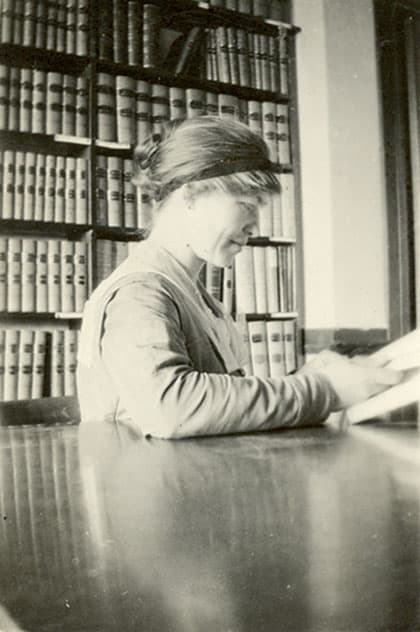History was made this past week as the 100th anniversary of the first female Aboriginal and Métis graduate, Annie Maude (Nan) McKay, now coincides with the largest Aboriginal graduating class to date from the University of Saskatchewan.
The U of S has come a long way since McKay received an entrance scholarship of $200, recently welcoming 363 self-declared Aboriginal graduates into its Alumni Association. The association recognizes a community of approximately 143,000 graduates over the course of its 108 years as an academic institution. This impressive figure now includes the class of 2015, which boasts the second-largest graduating class in U of S history totaling 3,375 students.
Candace Wasacase-Lafferty, director of First Nation and Métis engagement at the U of S, recognizes the significance of these accomplishments both for the culture as well as the institution.
“As Aboriginal people, I believe we have much to offer the U of S and beyond. We offer a diversity of perspectives and a connection to land and community that adds deep value to the U of S. Universities exist to create and disseminate knowledge; it is that value that makes me believe that Aboriginal perspectives and Indigenous knowledge can flourish here,” Wasacase-Lafferty said in an email to the Sheaf.
McKay’s gender, culture and historical timeliness are not the only reasons to remember and honour her life and legacy. What is perhaps even more remarkable is everything McKay was able to achieve in her time at the university as not only a student but as a faculty member as well.
In her first year on campus, McKay served as a staff artist for the Sheaf, which was also in its inaugural year. She was a member of the Students’ Representative Council, which later became the U of S Students’ Union, secretary of the campus YWCA, vice-president of the sorority Pente Kai Deka, as well as secretary of the Literacy Society. M cKay graduated in 1915 and became assistant librarian of the University Library until her retirement in 1959.
cKay graduated in 1915 and became assistant librarian of the University Library until her retirement in 1959.
Wasacase-Lafferty speaks to the inspiration that McKay’s legacy invokes in Aboriginal and non-Aboriginal students alike.
“The story of Nan McKay demonstrates that Aboriginal people have been a part of this institution from the very beginning. This serves as great inspiration to our current student body and reminds us all of the power of resiliency and determination, a story we can all value.”
Although several notable accomplishments, awards and accolades were recognized over the four-day convocation, those present were reminded yet again of McKay’s legacy when it was announced that this year’s celebration also marks the greatest number of Aboriginal students to graduate from the U of S’ College of Medicine.
McKay played a significant role working as a volunteer nurse during the flu epidemic of 1918. She was later selected to unveil a plaque in commemoration of the students who died in the epidemic.
“Upon reading her biography, I was deeply impressed by her level of campus community involvement. She was a true citizen of the university and it further demonstrates that we all have a role to play in the culture of the university,” Wasacase-Lafferty said.
Wasacase-Lafferty is currently focused on the development of the Gordon Oakes-Red Bear Student Centre, which will play a key role in making the U of S the predominant Canadian medical-doctoral university in Aboriginal education. As the U of S continues to take steps toward becoming the “university-of-choice for Aboriginal students in Canada,” Wasacase-Lafferty acknowledges the importance of student stories, both past and present.
“I love talking to alumni who speak to the challenges they faced and the important issues of their day. It is then when we can see progress. It is important to challenge but also to appreciate our roles in the culture we create.”
Although McKay cannot be here to tell us her story today, Wasacase-Lafferty reinforces its relevance and encourages students to imagine the significance of McKay’s role in both university and cultural history.
“It is difficult to tell what struggles she might have encountered. One can imagine that it must not have been an easy path to take. It would have been unusual for any woman, and especially Aboriginal women, to be in higher education at that time. Nan McKay’s story is one of commitment and contribution and it is as remarkable today as it was 100 years ago.”
—
Images: McKay Family Fonds/University Archives & Special Collections